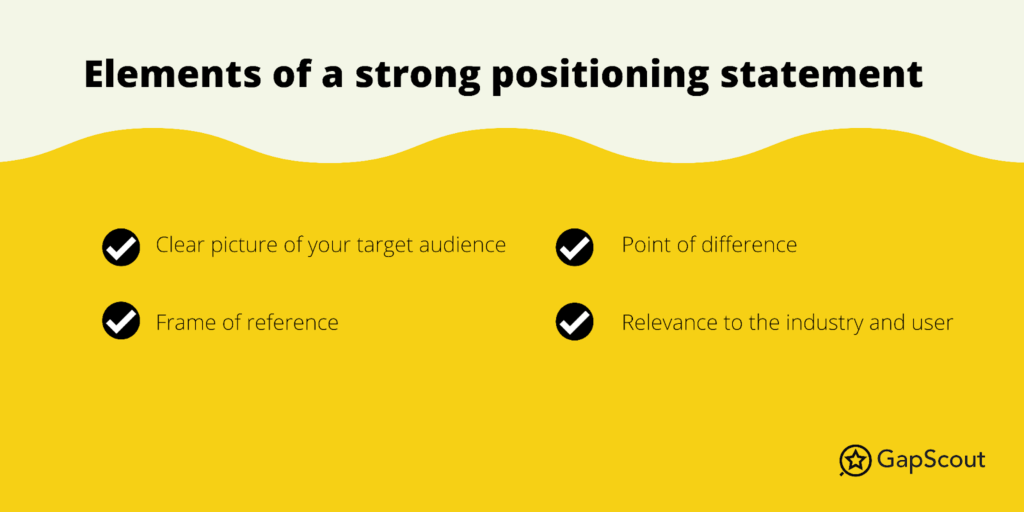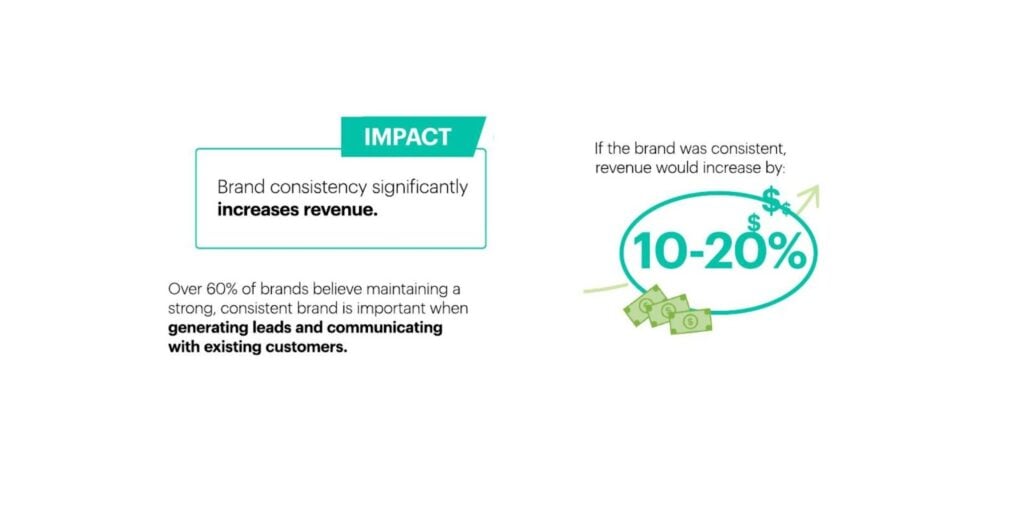Everyone talks about branding and its benefits. But let’s be honest — branding a small business differs from branding a large corporation or an eCommerce store.
Most small businesses enjoy strong personal relationships with their customers. They’re strong in their ‘game’ but miss out on the opportunities to reflect their brand.
The pandemic and rising competition from deep-pocketed players have impacted several small businesses. But branding is a great exercise to rise and shine once again, and it’s not as complicated as it sounds.
Branding isn’t about spending thousands of dollars on a fancy logo, a great website, or a flashy campaign. Branding is about trust and perception. In fact, 46% of customers are open to paying more for a brand they trust.
But how does a small business build a trustworthy brand in today’s world? Here are seven things you must remember while you’re branding for a small business.
1. Branding is more than just a logo.

A brand isn’t something you define on a piece of paper. It’s not as easy as drawing a logo or writing a style guide.
Branding shouldn’t be seen as a ‘logo design’ exercise but the total of the experience you offer to your customers, your community, employees, and everyone else.
While a logo and a brand guide are essential, look at branding as an opportunity to reflect how you want to be perceived.
David Ogilvy famously referred to a brand as something intangible.
A brand is a complex symbol. It is the intangible sum of a product’s attributes, its name, packaging and price, its history, reputation, and the way it’s advertised. A brand is also defined by a consumer’s impression of people who use it, as well as their own experience.
David Ogilvy
Branding is a continuous process to foster a ‘positive’ image at each possible customer interaction. Focus on all opportunities to force others to form a positive opinion and perception about your business. This involves managing and refining:
- The feeling you radiate
- Your packaging, store experience, signage, etc.
- Your communication across the website, social media, and ads
- Your content, voice and tone
- Your customer service experience
This is not a one-off activity, but totally worth it. Good branding will make your customers trust you, think about you, and then talk about you in a positive way.
2. Audience research is important.
94% of consumers would recommend a brand they’re emotionally engaged with.
This single number should make you serious about making your audience ’emotional’.
Small businesses are known for their deep connections with customers. So, why not use them to delight and engage future customers better?
Research and document who your ideal customers are — what they want, their pain points, why they would likely buy from you, and what they care about the most.
One way to do this is to focus on demographic profile, behavioral approach, and sentiment analysis while researching your customers. This will help you appeal to their innermost desires, appear relatable, and be memorable.
But how to know more about your customers, especially when you’re just beginning or have a small customer base?
Well, there is a simple way: Read online reviews about you and your competitors.
Having these data points would help you understand a lot about your audience. You will know what they love, hate, admire, or despise. Most importantly: you will discover the gaps in the market, and can use your newfound knowledge to drive all efforts to appeal to their emotions.
3. Ignore your hunch or bias; rely on data.
You probably have heard someone say something like:
“I know it for a fact that this would work!”
Don’t be too rigid or biased towards anything while branding for a small business. Your hunch or bias might dilute your branding efforts.
Take the example of Tropicana.

Tropicana hired Arnell in 2008 for a complete rebranding exercise.
Arnell’s explanation of the brand design exercise clearly demonstrates what can go wrong with a hunch or biased opinion.
Arnell Group’ thought’ to evolve the brand to move over symbolism and depict the actual product — orange juice on the packaging. They favored modern minimalism, emotional attachment to ‘squeezing’ an orange (in the form of a cap), and several other ‘intangible’ hunches.
But the whole ‘idea’ failed. Nearly $35 million in marketing spend, and a few weeks later, they lost 20% of their monthly revenue within a month of launch.
They ended up pulling the new brand packaging off the shelves a few weeks later.
Needless to say, we live in a data-driven world.
Nearly everything is connected — your customers, their opinions, your competitors, and more. Try to understand users’ opinions, hopes, and expectations before going with a hunch.
Conduct market research using available information to strengthen your assumptions, cross-verify your hunches and be more objective.
Use GapScout to find what people are talking about you, your product, your competitors, and your industry. This source of truth can help you save yourself from costly mistakes that happen when you’re just listening to your gut.
4. Write a strong positioning statement.

People are exposed to 5000+ advertisements and brands daily. You don’t want to be a ‘me-too’ brand.
In a crowded world fighting hard for customer attention, writing a solid positioning statement is a failsafe strategy to stay unique and relevant.
A positioning statement outlines your brand’s unique value proposition for the end customer. A well-crafted positioning statement is foundational to your branding and helps you stand out in the crowd by ensuring the following:
- Clear picture of your target audience
- Frame of reference
- Point of difference
- Relevance to the industry and user
Your positioning statement guides every marketing effort around your business by detailing why your customer should pick you over others.
Also, it makes you avoid any fad or hype and stay focused on your brand and what your customers actually need and appreciate.
Read more: How to write your brand positioning statement
5. Reflect on your uniqueness.
Any branding exercise should begin by finding the ‘why’ behind the business. This helps you stand out and reflect your brand’s personality, which in turn helps you to communicate your ultimate value proposition to potential customers.
Never fall into the lure of being a ‘copycat’ brand, like millions of others out there.
Copying someone else does more harm than good. For example, let’s say you’re into the business of sporting goods. You admire Nike, Adidas, and other global brands and start imitating them in hopes of success. You won’t succeed for sure but will be seen as a wannabe copycat with nothing new to offer and written off by your potential customers.
The reason is simple — those companies have built their brand backed by their brand ethos. Plus, they’ve tested and refined their brand through years of grunt work. They have spent millions of dollars refining their positioning and knowing their target audience extremely well.
As a small business owner, you cannot imitate the success of other companies just by copying any brand. Instead, you should create and communicate a solid and differentiating reason to choose you over others.
Research the things your customers are passionate about and relate to. See how your personality and brand can fuel their passions. Then use your positioning statement to reflect your uniqueness and power your brand narrative.
6. Perform competitor research.
Any successful industry is sure to have competitors. If there is no competition, it’s not worthwhile! Big online players, other small businesses or some new ventures — your competitors are fighting for the same pool of customers.
When you look at your competitors, you need to do your research to understand why (or why not) they are a hit among customers. Competitor research would help you unearth opportunities, discover market gaps, understand your audience, and streamline your entire branding exercise.
Plus, it will help you strengthen your positioning statement. Competitor research will help you become a better alternative, identify the market gaps and give you many ideas to differentiate yourself from others.
7. Stay consistent and avoid FOMO.
Social media buzz is quite distracting for a small business owner.
In 2022, you can find a new growth opportunity on every other scroll. FOMO and ‘shiny object syndrome’ are pretty serious problems for any business.
The rule of seven in marketing says that a customer must see a message at least seven times before making a buying decision. If you’re inconsistent, you will be lost in the crowd and might lose on a recall opportunity.
Branding is a long-term game that requires patience and consistency.
In fact, consistent branding helps enjoy 3.5x visibility more than inconsistent branding efforts. Also, consistency has also helped businesses increase their revenue by 10-20%.

So, better stick to your brand theme/values and see benefits compound over time.
A quick checklist when branding for a small business.
I have covered a lot in this article, so to make things easier for you, feel free to save the checklist below to your files for future reference!

Start branding for a small business by using in-depth market research.
Market research can be your best shot at differentiating yourself from other brands in the market. A strong brand reflects a cohesion between your business, what you do, who you are, your customers, and their expectations.
Insights-driven branding exercise will help you create a strong brand recall and connection and stand out in a crowded world.
Think about building a brand based on actual audience insights as a small business. And if you’re struggling with market research, discover how GapScout can help.
Ready to Automate Your Market Research?
Get exclusive access to GapScout prior to release!



